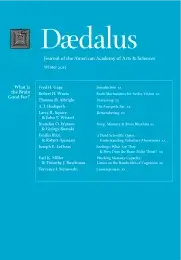Brain Mechanisms for Active Vision
Active vision refers to the exploration of the visual world with rapid eye movements, or saccades, guided by shifts of visual attention. Saccades perform the critical function of directing the high-resolution fovea of our eyes to any point in the visual field two to three times per second. However, the disadvantage of saccades is that each one disrupts vision, causing significant visual disturbance for which the brain must compensate. Exploring the interaction of vision and eye movements provides the opportunity to study the organization of one of the most complex, yet best-understood, brain systems. Outlining this exploration also illustrates some of the ways in which neuroscientists study neuronal systems in the brain and how they relate this brain activity to behavior. It shows the advantages and limitations of current approaches in systems neuroscience, as well as a glimpse of its potential future.
Though our perception convinces us beyond a doubt that we see the visual world as one coherent whole, we actually see a series of snapshots from which we construct a unified view of the world in our brains. Figure 1, which shows a record of the eye movements of a viewer inspecting the Georges Seurat painting A Sunday Afternoon on the Island of La Grande Jatte, illustrates the snapshot process. A record of the viewer’s eye movements is superimposed on the painting. The black lines show the path of the eyes as they move from one part of the painting to another. These rapid eye movements, referred to as saccades, are not only fast but frequent, occurring two to three times per second. The dots at the end of each saccade are visual fixations, the points at which the eyes come to rest. Nearly all of our useful vision occurs during fixations, because the scene is then stationary in front of the eyes. With successive fixations, the brain receives a series of snapshots of different fragments of the scene. From these fragments, we become convinced that we see the whole scene at once. . . .
Access the full volume here.
